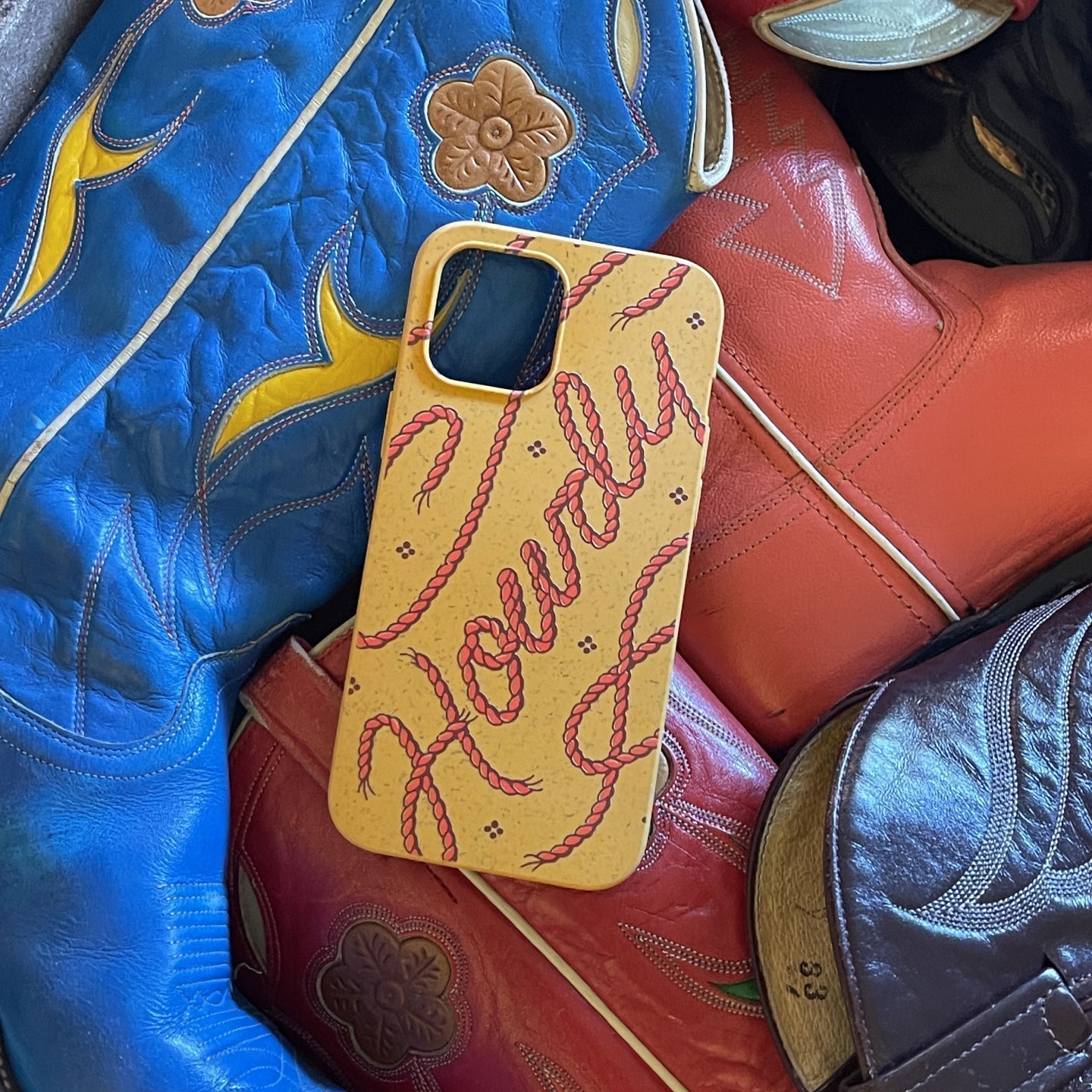
Shopping sustainably can be intimidating. There are lots of words to learn, sometimes used to completely greenwash you. So to shop smart and live a more sustainable lifestyle that is eco-conscious, you first need to understand what these green words mean. Only then can you be confident in your choices and feel good about how you’re contributing toward a cleaner Earth. Below, we have listed 17 common sustainability words from A to Z that you will come across when adapting to a new sustainable lifestyle.
#1 Biodegradable
Biodegradable products are designed to break down via microorganisms like bacteria. However, there is a distinct difference between something that is biodegradable vs. compostable. While microorganisms can assist in breaking down a biodegradable product, it’s not always possible. Biodegradable plastics, in particular, often reach our oceans, where the climate and conditions are not ideal and can barely break down. Most biodegradable products break down easier in soils that are 122 degrees Fahrenheit (50 degrees Celsius).
Furthermore, biodegradable products are not always free of harmful toxins. While they break down, they can release toxins and chemicals that eventually leak into soil and waterways.
Biodegradable vs. Compostable: Understand The Differences

#2 Carbon Footprint
A carbon footprint is the total emissions of carbon dioxide that an individual or company puts out and — if looking at it in eco-friendly terms — is also responsible for. And a carbon footprint is not simply the carbon put out by heating your home or driving to work. An overall footprint is also the carbon you cause by purchasing certain foods and products.
There are many ways to track and count your total carbon footprint over the course of a year or longer. For example, one way to cut back on your carbon footprint is to choose a vegan lifestyle, reducing your dependency on meat (a huge source of carbon emissions across the globe). You can also choose to support brands and companies who take great efforts to reduce their carbon footprint created by product manufacturing (ahem, like Pela).
#3 Closed-Loop
A “closed-loop” cycle or system is one where items are returned to their natural state. Often called a cradle-to-cradle system, a closed-loop system ensures that produced items will never end up in a landfill. Isn’t recycling a closed-loop system? Well, yes and no. Sadly, recycling should be, but the process is energy-intensive. Not to mention only a small percentage of products are recyclable. However, it’s up to brands and companies to design their products with things like renewable resources and compostable materials if we want a true closed-loop system.
Case in point: Pela offers a 360 Program that invites you to mail back old phone cases (conventional and compostable) where we dispose of them properly by recycling them, upcycling them and more.
#4 Composting

Composting is one of the best ways you can help the earth. Basically, composting is when you break down carbon-based items. Compostable items can be broken down in mere months when placed in healthy soil where microorganisms are. A few examples of non-compostable products are plastics, glass and metal. Sadly, these items are not capable of compost and, in a perfect world, would be recycled. However, the truth is that they often wind up in landfills where they will stick around, permeating the soils and waterways with toxins and microscopic particles.
Composting is actually pretty easy. The hard part is choosing and finding compostable products (like our phone cases and accessories) and foods. Interested in composting at home? Explore our guide composting for beginners to learn more about what kind of food scrap and other items (like our phone cases) that you can compost. And be sure to check out the Pela Lomi, an at-home compost that can break down food scraps and compostable items into soil you can place straight in your home garden and indoor plants.
Composting for Beginners: An Ultimate Guide
#5 Eco-Friendly
Eco-friendly is a fairly broad term, but it basically stands for being kind to the earth. Unlike “organic,” which must be approved by the USDA, eco-friendly is non-specific and often thrown around as a greenwashing word. There are no restrictions or requirements, so when you see a product or company that claims to be eco-friendly, it’s worth researching how. If a company calls a product eco-friendly simply because the plastic bottle can be recycled, is that really enough?
For example, Pela Case eco-friendly phone cases are genuinely eco-friendly. We have a sustainability strategy in place, not to mention our phones are 100 percent compostable.

#6 Energy-Efficient
The word “energy-efficient” often refers to an item or task that uses less energy. At the end of the day, this means it also reduces its carbon footprint. For an individual or company to be energy-efficient, they often use renewable resources and renewable energy. And, typically, when you choose to become energy-efficient, there’s a higher upfront cost. Energy-efficient appliances and equipment like solar panels and refrigerators are costly, but they have a return on investment that cuts down on your energy bills.
#7 Fair Trade
Fair trade simply means that farmers and farmworkers are given a fair working wage that can support their livelihoods. Often, fair trade also means that the land itself is treated fairly, too, which links it to sustainability. Sustainable farming methods have a more positive impact on the land, minimizing the destruction of local ecosystems and improving their quality of life through reforestation, water conservation and education.
Fair Trade certified products feature a logo, so it’s easy to spot. However, for items that are manufactured, processed or farmed in the U.S., EU and Canada, you may have to do some digging into their fair trade practices as the certification isn’t necessary.

#8 Greenwashing
Greenwashing is a word used to describe the fluff language and packaging design many manufacturers and brands use to make their products appear green and sustainable.
Greenwashing can also be as simple as giving products natural-looking packaging with neutral and green colors, making buyers think it’s clean and earth-friendly when, in fact, it is not. This is why greenwashing is also referred to as a “green sheen,” meaning it is only green-friendly on a surface level, misleading consumers to believe that the company cares about the environment. For example, you might see this on plastic shampoo bottles. This single-use plastic container might look sustainable with its flora and fauna illustrations and false green seal of approval, but at the end of the day, it’s only adding to our microplastics problem.
#9 Microplastics
What are microplastics, anyway? Essentially, microplastics are the microscopic remnants of plastics that wind up and break down in our landfills and oceans. Microplastics are a growing concern and can be caused by everything from water bottles, packaging materials, synthetic clothing and even tires.
The best way to prevent microplastics from entering our land, food and waterways is to say goodbye to single-use plastics and reach for more sustainable production methods and products. Think compostable plastics like our plant-based biopolymer phone cases that are made from flax shive.
Learn All About Compostable Plastic Here
#10 Naked Packaging
Naked packaging refers to products that are sold to consumers without all the extra waste that comes with packaging. You can see a good example of naked packaging in many of the sustainable body soaps and shampoo bars on the market. Pela Case doesn’t offer naked packaging now since we have to ship our products to you, but we do strive to use minimal waste when we send our phone cases and phone accessories. Our eco-friendly sunglasses are even made and packaged with 82 percent less waste than conventional sunglasses.

#11 Natural Resources
Natural resources are the raw materials found in nature that we harvest to create products and energy. This can be anything from fossil fuels taken from the earth to the sun in the sky. It can even be flax shive, like that used in our phone cases. However, natural resources are not all sustainable and are not to be confused with renewable resources, which we’ll dive into a bit later. Natural resources are sometimes non-renewable and contribute to greenhouse gases and our carbon footprint.
#12 Net-Zero
We hear a lot of this word: net-zero. So we’re going to break down what it means. Net-zero, also referred to as carbon neutral, implies a balance in carbon emissions. When a company achieves net-zero certification, they have essentially removed their carbon footprint, most often by buying carbon offsets or participating in carbon offset projects.
Many argue that becoming net-zero is not enough and that it starts at the source. In other words, there are better ways to reduce the carbon emissions and their overall carbon footprint in the first place. Learn all about becoming net-zero in our carbon neutral guide.
What Does Being Carbon Neutral Mean?
#13 Organic
“Organic” is one of those words that was once used everywhere. Foods like meat and produce and fibers like cotton and bamboo must be raised and grown free of harmful pesticides and not be a product of genetic engineering (seeds or otherwise).
Today, natural-based products like crops and livestock must meet the USDA regulations to obtain the word “organic” in the title. But while it makes it easier for the consumer to recognize, there are still a lot more items that can be organic. For example, even your garden at home can grow organic fruits and veggies. It’s when you plan to sell products in mass that you need the USDA approval to call it so.

#14 Renewable Energy
Renewable energy is the electricity derived from renewable power sources such as solar panels, windmills and turbines as well as hydropower dams and plants. The sun, wind, water and the earth’s heat are all considered renewable resources, which is what it takes to create renewable energy. They are easily replenishable, unlike non-renewable resources like coal, oil and natural gas. And while renewable energy will still cause emissions, it’s not nearly as high as those caused by the production of non-renewables. Pela’s 2020 Production Plan helped our phone case manufacturers transition to renewable energy resources, among other action items with positive impacts.
#15 Single-Use
Simply put, “single-use” refers to an item or product that is used only one single time. That’s it. Single-use products — and single-use plastics, especially — are a huge problem for the environment. Even when a single-use product is designed to be recycled, many simply forget or it winds up being unrecyclable anyway due to what it carried or how it was used. So single-use products are clearly not the answer. At Pela Case, we believe that zero-waste and compostable is far better.
#16 Wish-Cycling
Ever throw something into the recycling bin, hoping it can be recycled when you’re actually unsure? This is what’s called wish-cycling. Even if you generally know the types of items that are easily recyclable, it’s best to check with your local guidelines and understand the specifics. Otherwise, you might be wish-cycling a flimsy plastic wrapper when all your recycling center can recycle is hard plastics.
#17 Zero-Waste
We hear a lot about zero-waste products and lifestyles these days, but what exactly does this mean? Basically, zero-waste means that something or someone produces a minimal amount of waste that might otherwise eventually wind up in a landfill. True zero-waste is practically impossible to achieve. We are always consuming something, whether it’s food or clothes, so it really comes down to consuming as little as possible.

Want to live a zero-waste lifestyle? Consider using jars instead of plastic when collecting bulk items from the grocery store. Or shop from thrift stores, create a minimal capsule wardrobe and avoid fast fashion, which is harmful to the environment in more ways than one.
While phones are a necessity, you can make them last as long as possible to reduce electronic waste. Use a sustainable phone case to protect it along with our zero-waste Canopy liquid screen protector.
Shop Our Liquid Screen Protector
Refer to Our Green Glossary Whenever You Need
We hope this list of 17 sustainability words has helped enlighten you and steered you down a more sustainable path. With this knowledge, you can shop more sustainably with confidence and avoid those greenwashed brands and products.
Image Credits
iorozuya/Shutterstock.com
Stakes/Shutterstock.com
Alex Kednert/Shutterstock.com
photonova/Shutterstock.com
Pasek Renti/Shutterstock.com
Mimadeo/Shutterstock.com
Attasit saentep/Shutterstock.com
chaiyapruek youprasert/Shutterstock.com
Michael Smith ITWP/Shutterstock.com



